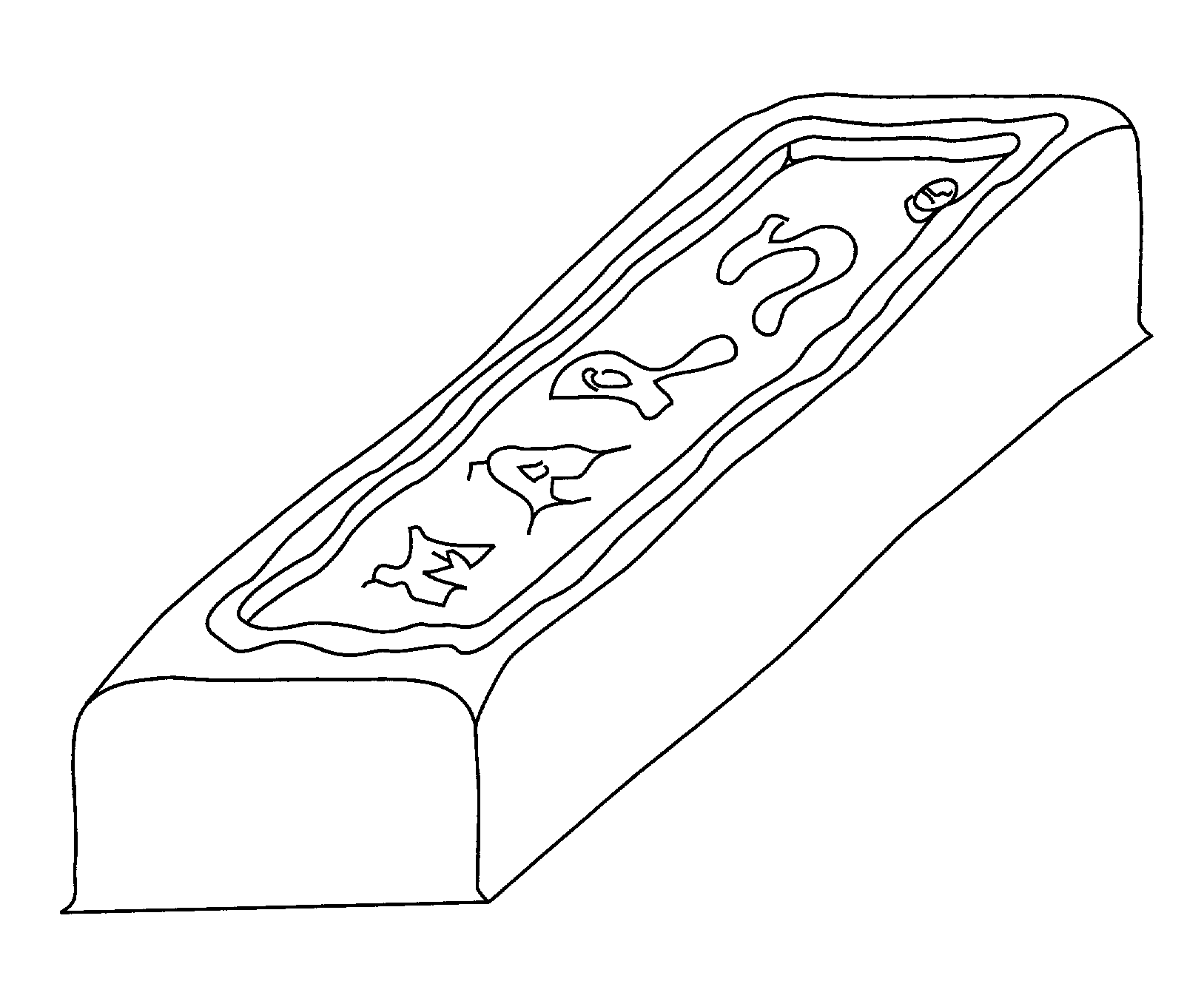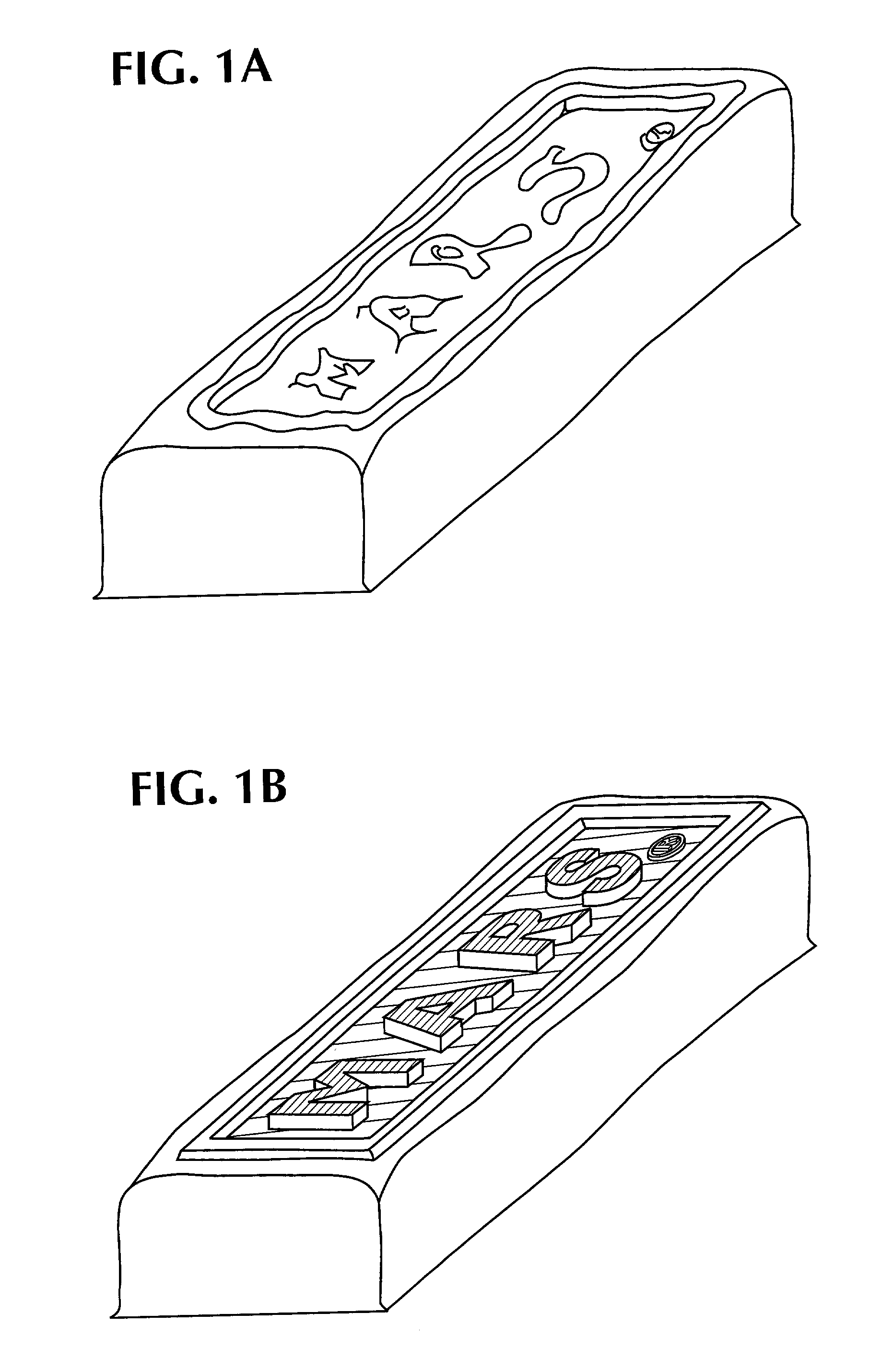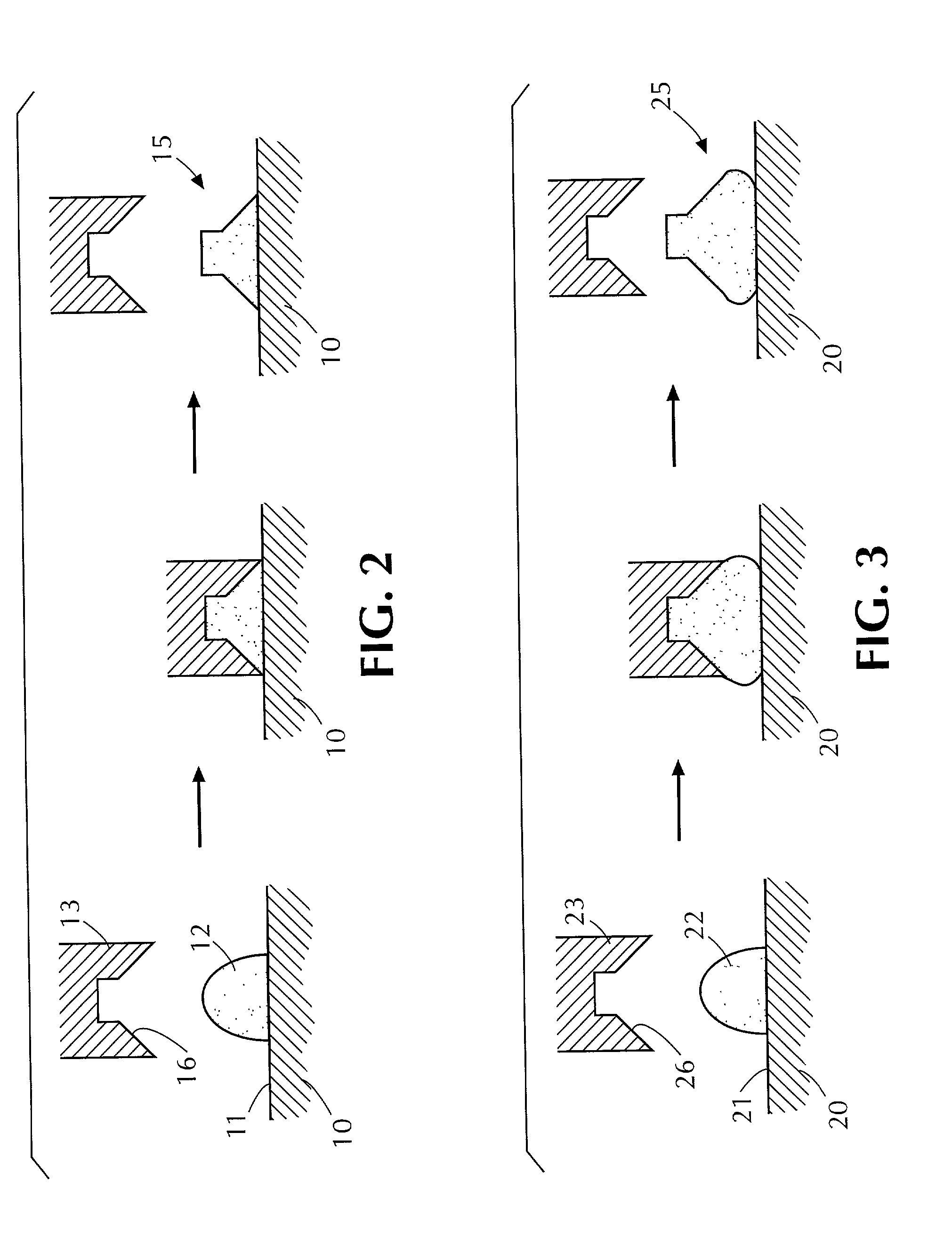Method of embossing chocolate products
a chocolate and embossing technology, applied in the field of embossing chocolate products, can solve the problems of reducing the efficiency of such commercial production lines, affecting the gloss of chocolate, and excessive time required to fill molds, so as to improve the wetting properties and improve the gloss. , the effect of improving the wetting properties
- Summary
- Abstract
- Description
- Claims
- Application Information
AI Technical Summary
Benefits of technology
Problems solved by technology
Method used
Image
Examples
example 1
[0151]A milk chocolate composition is prepared using the formulation in Table 1-A below:
[0152]
TABLE 1-AMilk Chocolate FormulationSugar50.00%Cocoa Butter20.49%Whole Milk Powder18.00%Chocolate Liquor11.00%Lecithin 0.50%Vanillin 0.01%
[0153]The chocolate mixture is refined to reduce the solid particle sizes to 25 microns (by micrometer) and then loaded into a Petzholdt Conge. The chocolate is dry conged for 6 hours after which lecithin is added. The chocolate is then spun in the conge for 30 minutes. The conged chocolate is transferred into a tank where additional lecithin and cocoa butter are added (standardization) to achieve an apparent viscosity of 20,000 cps at 45° C. The standardized chocolate is then tempered in a continuous Sollich Solltemper-Turbo Model MSV3000 where the chocolate is cooled from 45° C. to 28° C. with aggressive shear to produce cocoa butter crystals of stable and unstable polymorphs. The tempered chocolate is warmed slightly in the last section of the Solltempe...
example 2
[0163]Caramel / nougat centers comprised as set forth in Example 1 are enrobed, embossed and cooled as set forth in Example 1 with the exception of the embossing plate contact time. In this example, the contact time is 3 seconds. The design detail is maintained better than Example 1 due to the reduced effect of the surface rewarm from the inner warmer portion due to the thicker layer of set chocolate created by the longer contact time. This reduces the subsequent flow of the embossed features. This results in a sharper design detail but only acceptable gloss.
example 3
[0164]Centers comprised as set forth in Example 1 are enrobed, embossed and cooled as set forth in Example 1 with the exception of the embossing plate contact time. In this example, the contact time is optimized to 2.1 seconds. The optimized time for a given plate temperature is a function of, among many things, chocolate type, environmental conditions in the embossing zone and setting rate in the cooling tunnel. The optimized time results in the optimum design detail retention, while delivering acceptable gloss.
[0165]This is achieved by controlling the thickness of the set layer by varying either the contact time and / or surface temperature of the embosser. The optimized contact time results in a set layer that is thin enough to allow the inner warm portions to warm the fat within the set layer, thereby providing fat to be expressed on the surface and providing acceptable gloss, but low enough to prevent flow of the chocolate that would result in loss of detail. This optimization ca...
PUM
 Login to View More
Login to View More Abstract
Description
Claims
Application Information
 Login to View More
Login to View More - R&D
- Intellectual Property
- Life Sciences
- Materials
- Tech Scout
- Unparalleled Data Quality
- Higher Quality Content
- 60% Fewer Hallucinations
Browse by: Latest US Patents, China's latest patents, Technical Efficacy Thesaurus, Application Domain, Technology Topic, Popular Technical Reports.
© 2025 PatSnap. All rights reserved.Legal|Privacy policy|Modern Slavery Act Transparency Statement|Sitemap|About US| Contact US: help@patsnap.com



